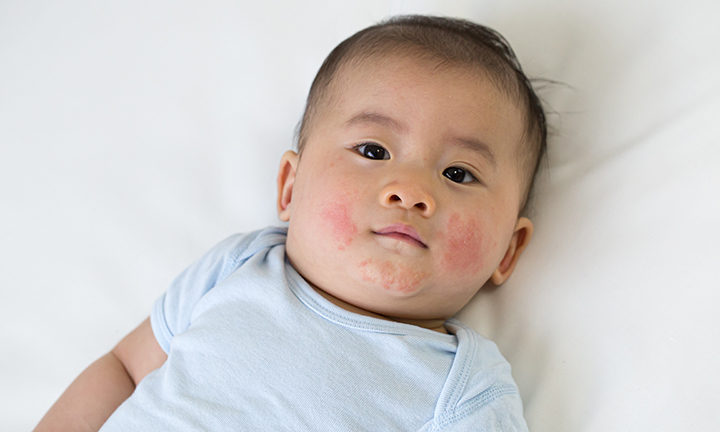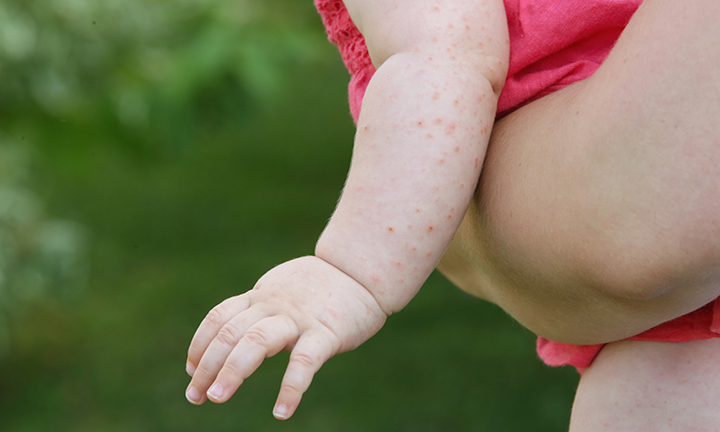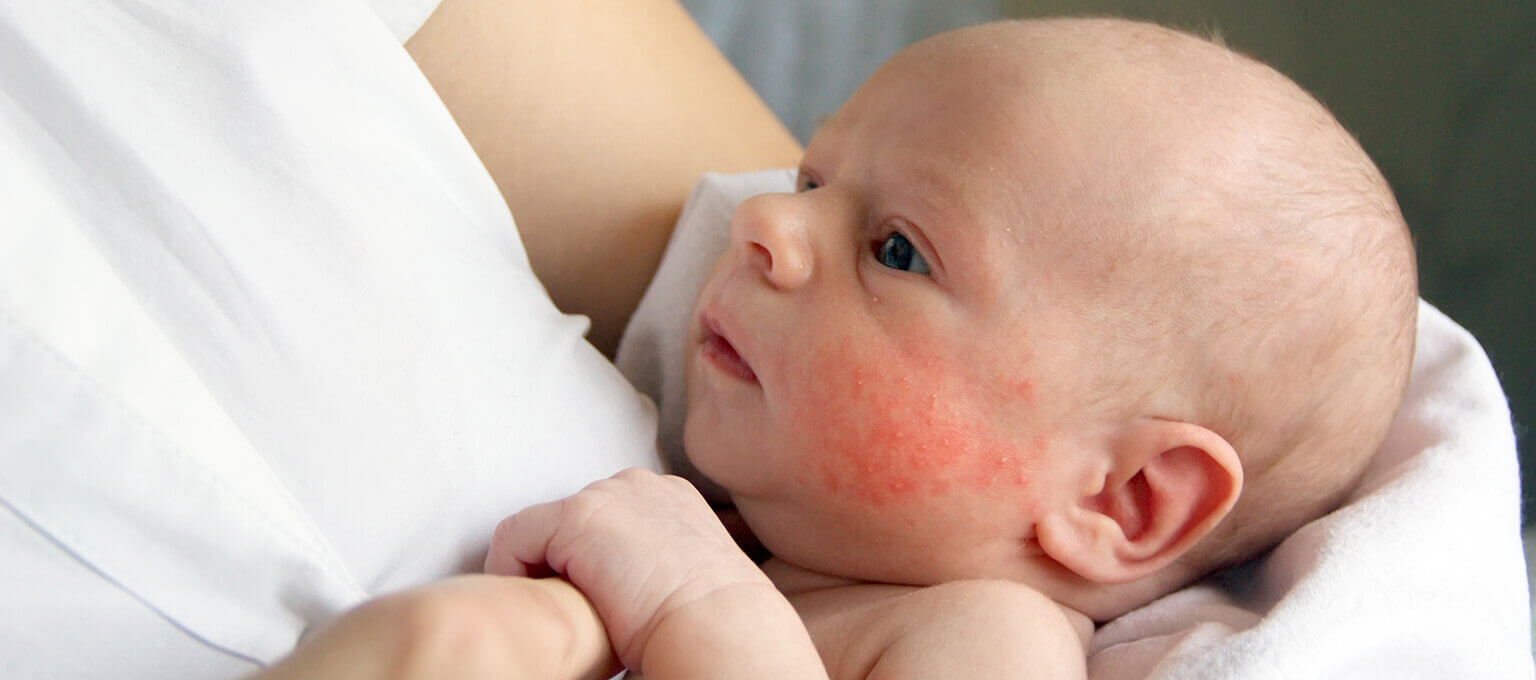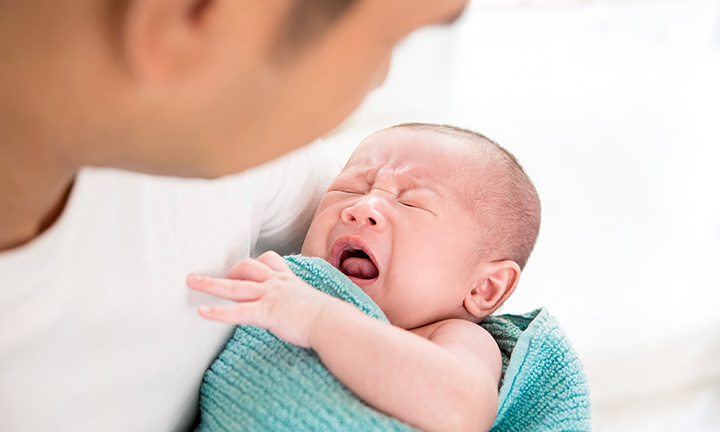
How to Deal With Bed Bugs on Babies
Bed bugs are pesky insects that feed on human blood – making them quite the nuisance! Not only do they leave behind nasty bites, but they can also be very hard to get rid of. Read the following article to find out what you can do if you suspect your baby has been bitten by a bed bug, what they look like and what signs indicate a bite. Learn this and more below.
What Are Bed bugs and What Do They Look Like?
Bed bugs are small insects that often live on furniture or bedding. They can be dark yellow, red or brown and typically reach around 5mm in length during adulthood. These pests can often be found hiding on bed frames, mattresses, clothing, furniture, behind pictures and under loose wallpaper. Bed bugs are nocturnal creatures, which means they are most active between 2 a.m. and 5 a.m. when your baby is probably fast asleep.
How Do Bed Bugs Get Into Your Home?
In the past, this common pest was associated with unhygienic practices, but in reality, bed bugs will set up home in even the tidiest of households. That being said, if you clean and vacuum regularly you are more likely to spot and eradicate an infestation before it’s out of control.
People tend to unknowingly bring bed bugs into their homes from their travels or after staying somewhere like a hostel, hotel, holiday camp or block of flats, where these bugs tend to be most prevalent. All in all, bed bugs can generally thrive anywhere they can find food, i.e. blood. This is why they tend to prefer densely populated areas or buildings, where they can easily move through cracks or door frames to find more food.
Certain things may come with a higher risk of introducing bed bugs to your home. These include:
How to Get Rid of Bed bugs and Prevent Bed bug Bites
Once it’s started, it can be virtually impossible to get rid of a bed bug infestation without calling in pest control. Female bed bugs lay between around 200 and 500 eggs in their lifetime, and all it takes is for one of those eggs to end up in your suitcase for you to have an infestation on your hands. While bed bug bites generally do not cause any health problems, their bites can irritate your baby’s skin and interfere with their sleep. That’s why it’s particularly important to deal with any infestation right away and take preventative steps to keep bed bugs out of your home.
Things you can do include:
One of the easiest ways to avoid an infestation? Good housekeeping. Regularly vacuuming your house and washing your bedding will help you spot any potential infestations before they get out of hand.
As previously mentioned, bed bugs are experts when it comes to finding food. And they will sneak through all conceivable cracks and crevices to reach it. If you live in a multi-occupancy building, you could try effectively shutting off your unit by sealing all cracks and small openings in your home. These tend to be found around floorboards, doorframes and light sockets. Other effective strategies include:
These tips can all help prevent a future infestation, but if you already have bed bugs, it’s time to call an expert. Contact your local council or local pest control service to book an appointment. It’s very unlikely you’ll be able to tackle bed bugs on your own as these pesky yet savvy creatures have started growing resistance to certain insecticides.
The Tell-Tale Signs of Bed bugs
They may be small, but bed bugs do tend to leave a few indications that they are in your home. These typically include bites, spots of blood on your bedding and small brown spots of bed bug poo on your bedding or furniture. That being said, there are a number of reasons your baby may have small red dots on their body, including certain rashes. You’re probably wondering what sets bed bug bites apart? Here are a few tell-tale characteristics:
Everyone reacts differently to bed bug bites. Some children have no reaction at all, whereas others may find them extremely itchy and experience painful swelling.
If you aren’t entirely sure where the bites on your baby’s body are coming from, try looking for other signs of these notorious pests around your little one’s bed explained above.
Can Bed Bug Bites Make Babies Sick?
Bed bug bites are irritating, but don’t generally pose a health risk to your little one. They aren’t known to cause illness or spread disease. That being said, no matter how much a bite itches, you should try to prevent your baby from scratching it. This could cause an infection, which may lead to fever, nausea and more pain.
In very rare cases, bed bug bites can cause other symptoms, including hives and a rash. They can also induce a severe allergic reaction (anaphylaxis). If your child starts wheezing, feeling lightheaded, struggles to breathe or has a fast heartbeat, call 999 right away. Anaphylaxis tends to develop suddenly and gets worse very quickly. In addition to the above symptoms, your baby may also start to feel sick and show signs of swelling or stomach pain.
How to Treat Bed Bug Bites
Patience is key when it comes to bed bug bites. Unfortunately, the best solution is to simply wait a few days until they heal on their own. It may be hard to watch your little one suffering and feel hopeless, which is we’ve compiled a list of things you can do to help minimise the itching and stop the pain:
You can also talk to your child’s doctor about using a mild steroid cream or antihistamines to ease bed bug bites. If your doctor prescribes a cream, it could be a good idea to keep a tube in your baby’s first-aid kit to cure any future bites!
It can be a little frustrating to know that there isn’t much more you can do to help your little one battle through bed bug bites, but as with many things, time is the greatest healer. The name of the game when it comes to bed bugs is preventing an infestation from happening in the first place.
FAQS AT A GLANCE
Bed bugs bites are usually small and red, often in a line or cluster formation, which can appear anywhere on your baby’s body that was exposed while they slept.
The Bottom Line
Bed bugs are undoubtedly one of the most disliked pests out there, particularly due to their love of human blood. While a major inconvenience, luckily their bites don’t pose a health risk to your little one. The little red itchy spots caused by bed bugs tend to clear up with minimal intervention within a couple of days. You may want to try applying a cold, clean cloth to help with the itchiness or a cream or antihistamine prescribed by your child’s doctor. As annoying as it may seem, the best way to handle a bed bug infestation lies in preventing it before it begins. If you’ve been travelling, you may have been unlucky enough to pick up a bed bug egg and transport it home in your suitcase. That’s why it is often best to check through your luggage and the place you’ve stayed for any signs of infestation before transporting things back into your home. If all else fails, call in a professional!
The information in this article is based on the expert advice found in trusted medical and government sources, such as the National Health Service (NHS). You can find a full list of sources used for this article below. The content on this page should not replace professional medical advice. Always consult medical professionals for full diagnosis and treatment.
Read more about Baby
Related Articles
Join Pampers Club and get:
















